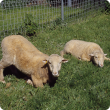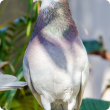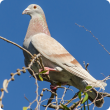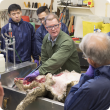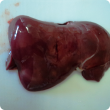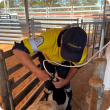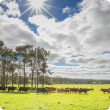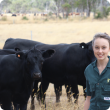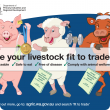Services
Search in Services
Filter services by topic
- Biosecurity & quarantine (89) Apply Biosecurity & quarantine filter
- (-) Remove Livestock biosecurity filter Livestock biosecurity
- Biosecurity (89) Apply Biosecurity filter
- (-) Remove Pests, weeds & diseases filter Pests, weeds & diseases
- Diseases (86) Apply Diseases filter
- Livestock health & diseases (84) Apply Livestock health & diseases filter
- Livestock disease surveillance (80) Apply Livestock disease surveillance filter
- Livestock & animals (75) Apply Livestock & animals filter
- Livestock species (57) Apply Livestock species filter
- Livestock management (29) Apply Livestock management filter
- Sheep (26) Apply Sheep filter
- Emergency animal disease preparedness (26) Apply Emergency animal disease preparedness filter
- Beef cattle (19) Apply Beef cattle filter
- Dairy cattle (15) Apply Dairy cattle filter
- Management & reproduction (11) Apply Management & reproduction filter
- Poultry & birds (10) Apply Poultry & birds filter
- Goats (8) Apply Goats filter
- Chemicals (8) Apply Chemicals filter
- Control methods (8) Apply Control methods filter
- Pigs (7) Apply Pigs filter
- Livestock movement & identification (6) Apply Livestock movement & identification filter
- Feeding & nutrition (6) Apply Feeding & nutrition filter
- Horses (6) Apply Horses filter
- Residues in livestock (5) Apply Residues in livestock filter
- Veterinary chemicals (5) Apply Veterinary chemicals filter
- Preventing residues (5) Apply Preventing residues filter
- Wildlife biosecurity (4) Apply Wildlife biosecurity filter
- Emergency response (4) Apply Emergency response filter
- Stockfeed (2) Apply Stockfeed filter
- Food, export & investment (2) Apply Food, export & investment filter
- Quarantine (2) Apply Quarantine filter
- Plant biosecurity (1) Apply Plant biosecurity filter
- Water (1) Apply Water filter
- Weeds (1) Apply Weeds filter
- Pests (1) Apply Pests filter
- Water management (1) Apply Water management filter
- Climate, land & water (1) Apply Climate, land & water filter
- Export services (1) Apply Export services filter
- Importing animals (1) Apply Importing animals filter
- Importing to Western Australia (1) Apply Importing to Western Australia filter
- Investment attraction (1) Apply Investment attraction filter
- Livestock research & development (1) Apply Livestock research & development filter

